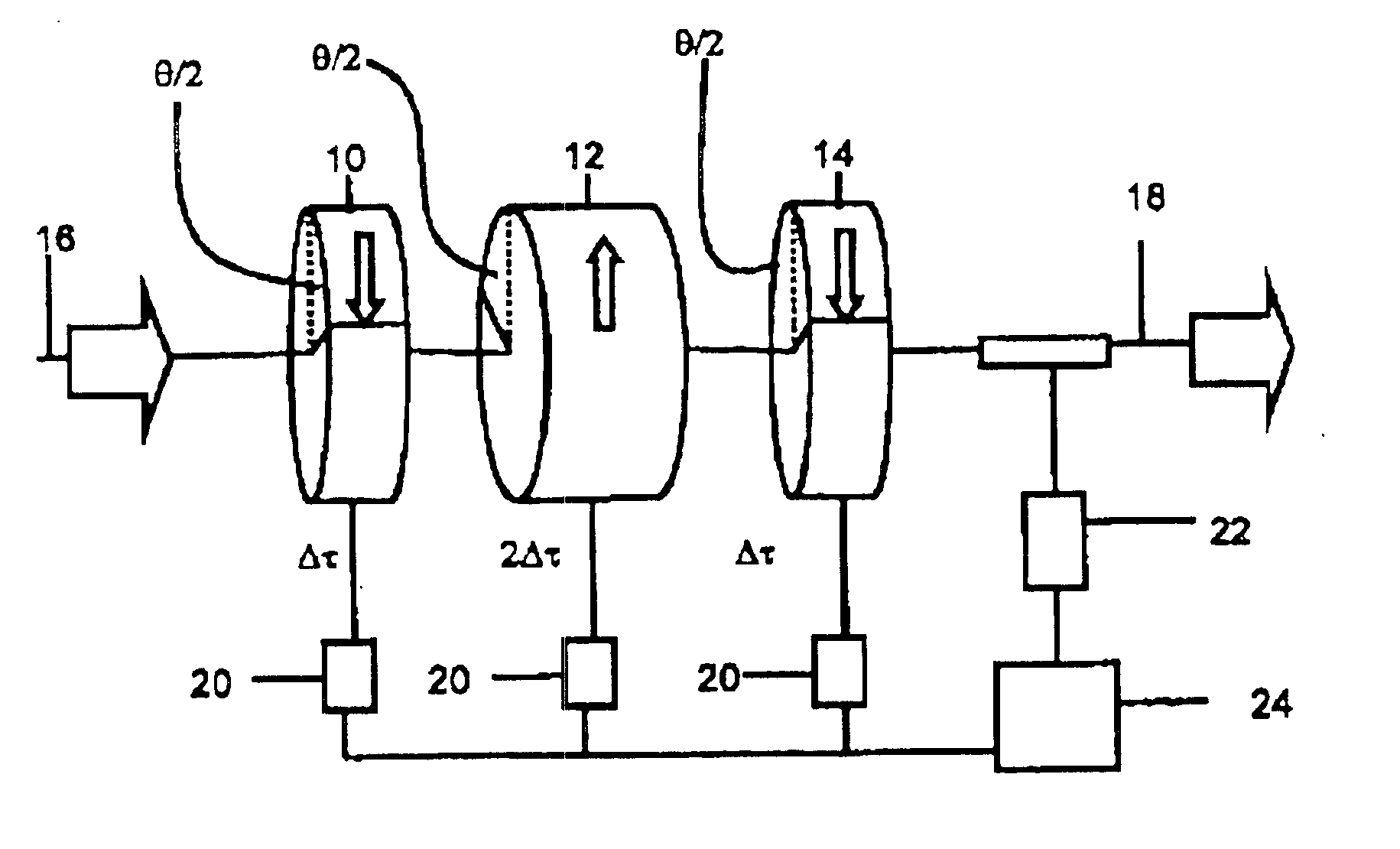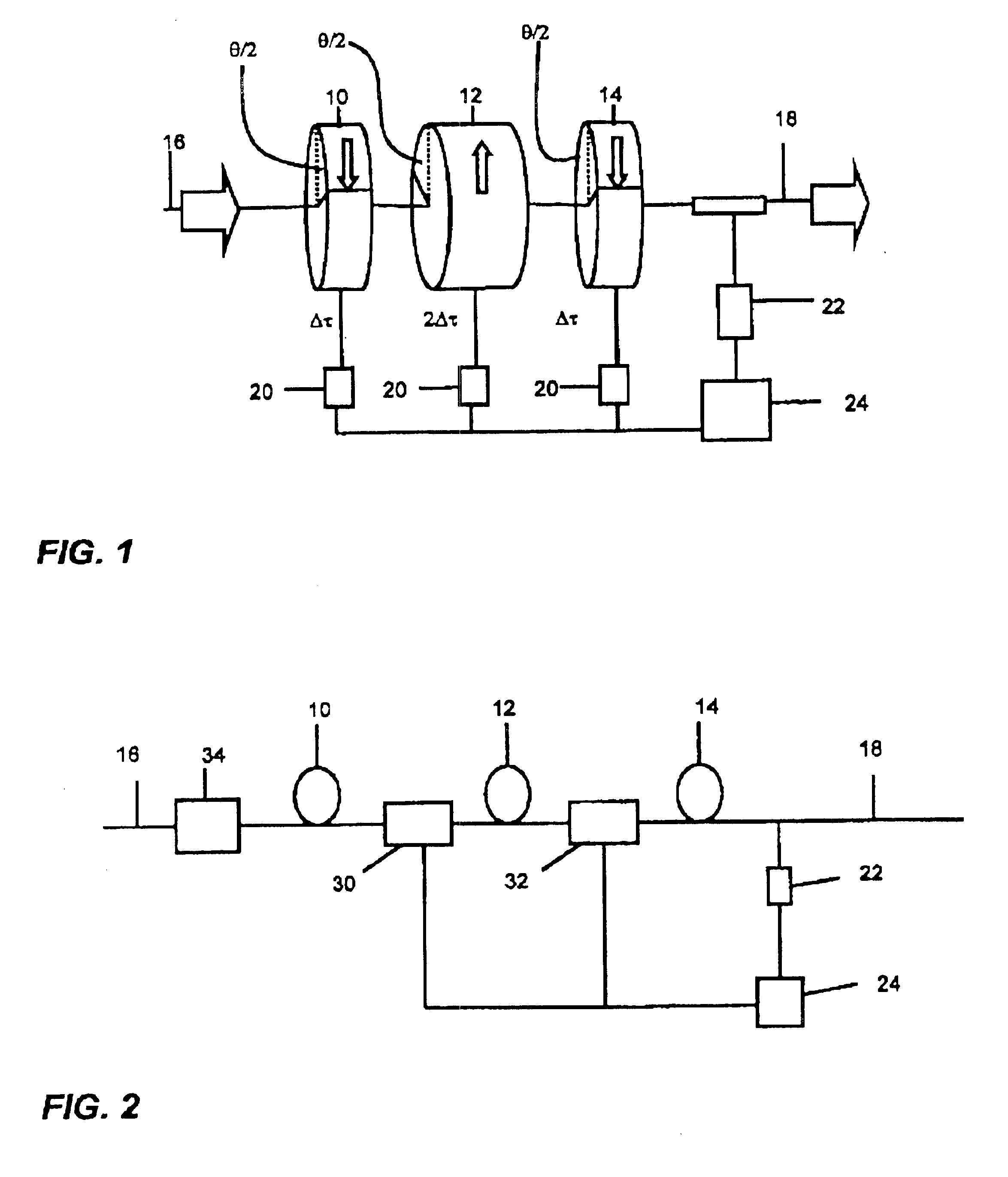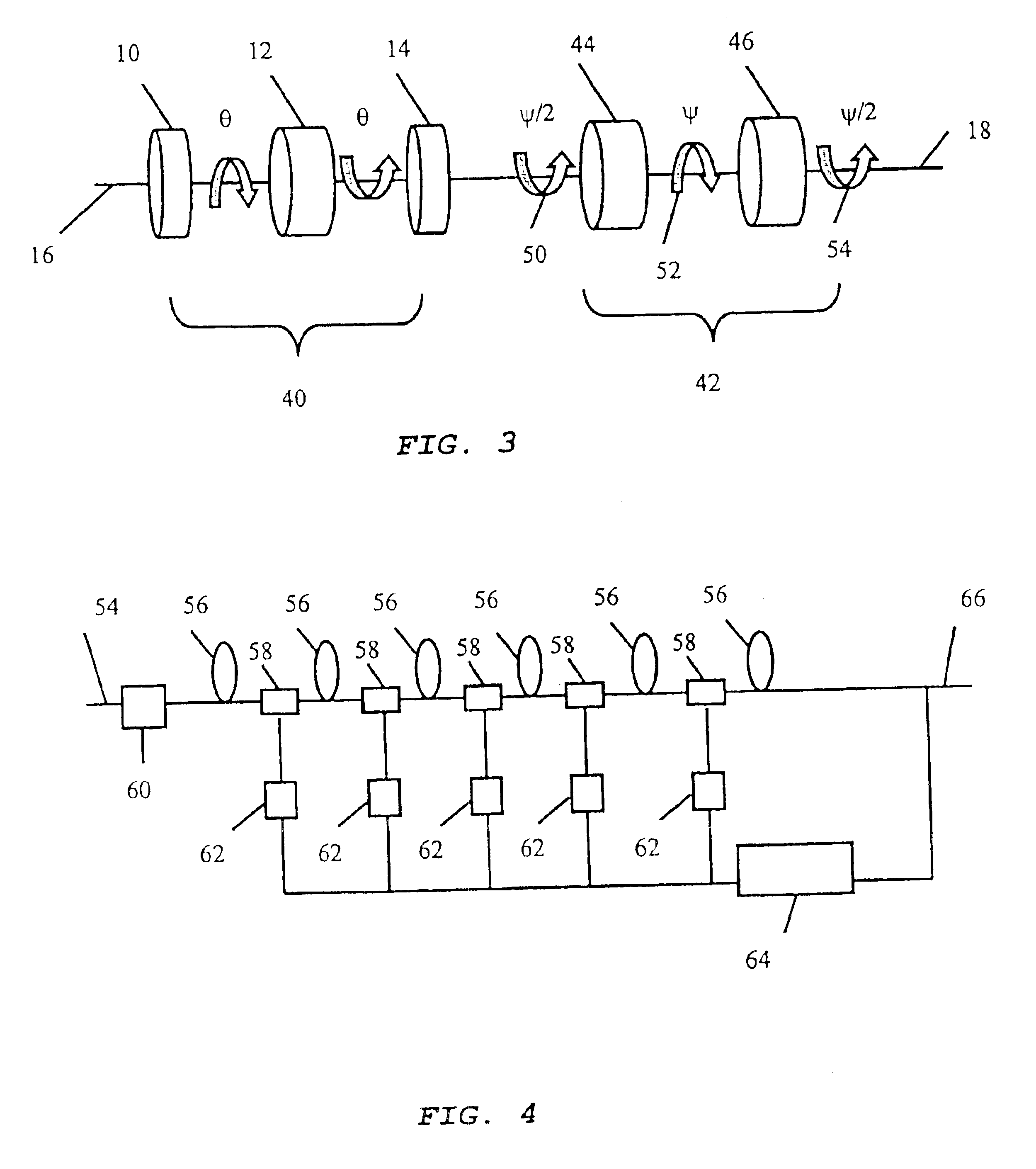Generation of variable differential group delay
a technology of differential group delay and variable, applied in the direction of instruments, polarising elements, optical elements, etc., can solve the problems of limiting the deployment of new systems over the older fibre route, polarisation mode dispersion, pmd,
- Summary
- Abstract
- Description
- Claims
- Application Information
AI Technical Summary
Benefits of technology
Problems solved by technology
Method used
Image
Examples
Embodiment Construction
The invention provides various architectures for providing variable DGD. As discussed above, one specific use of an arrangement which provides variable DGD is in PMD compensators, and the description below is in connection with such PMD compensators.
The first aspect of the invention provides a polarization mode dispersion (PMD) compensator which is designed to provide first order PMD compensation with no second order PMD penalty. The compensator of the invention may be implemented in various ways. FIG. 1 shows one such implementation.
The compensator of FIG. 1 comprises first, second and third birefringent elements 10, 12, 14 arranged in order between the input 16 and output 18 of the compensator. The elements have first, second and third DGDs, respectively, in the ratio 1:2:1, as shown in FIG. 1. For example, the elements may have the same birefringence, but have lengths in the ratio 1:2:1. Each birefringent element has two orthogonal principal axes, which are the axes of maximum an...
PUM
 Login to View More
Login to View More Abstract
Description
Claims
Application Information
 Login to View More
Login to View More - R&D
- Intellectual Property
- Life Sciences
- Materials
- Tech Scout
- Unparalleled Data Quality
- Higher Quality Content
- 60% Fewer Hallucinations
Browse by: Latest US Patents, China's latest patents, Technical Efficacy Thesaurus, Application Domain, Technology Topic, Popular Technical Reports.
© 2025 PatSnap. All rights reserved.Legal|Privacy policy|Modern Slavery Act Transparency Statement|Sitemap|About US| Contact US: help@patsnap.com



